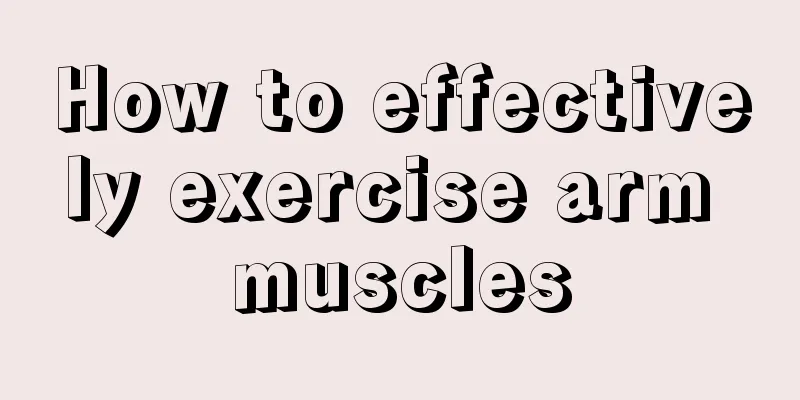If you feel pain here while exercising, go to the hospital immediately

|
Fitness experts remind people that many symptoms of physical discomfort that occur during exercise should be taken seriously. No increase in heart rate during exercise A person's heart rate increases when exercising, and the greater the amount of exercise, the faster the heart rate. If the heart rate does not increase significantly during exercise, it may be an early sign of heart disease, indicating the risk of angina pectoris, myocardial infarction and sudden death in the future. Angina during exercise During exercise, the myocardial load increases, causing myocardial oxygen consumption to increase. Especially for some middle-aged and elderly people with varying degrees of vascular sclerosis, exercise may cause relative blood supply deficiency to the heart, leading to coronary artery spasm and angina pectoris. When encountering this situation, you should stop exercising immediately. After taking nitroglycerin tablets sublingually, the angina pectoris will generally disappear. Headache during exercise A small number of heart disease patients do not feel any abnormality in the chest during an attack, but will experience headaches during exercise. Most people just think they didn't get enough rest or had a cold. Therefore, friends who participate in sports are reminded that if they feel a headache during exercise, they should go to the hospital for examination as soon as possible. Abdominal pain during exercise During exercise, sudden abdominal distension and pain are mostly caused by rectus abdominis spasm due to loss of water and salt through excessive sweating. When abdominal pain occurs, you should lie down and rest, do abdominal breathing 20 to 30 times, and gently massage the rectus abdominis for about 5 minutes to relieve the pain. When sweating too much during exercise, timely replenishing 200 to 300 ml of saline is the key to prevention. Abdominal cramps during exercise Upper abdominal colic is often caused by stomach spasms such as low water temperature during swimming, insufficient warm-up exercises, and excessive exercise. At this time, you can apply hot compress to the upper abdomen for 20 to 30 minutes, and press the Neiguan and Zusanli points with your hands for 3 to 5 minutes each. To prevent gastric cramps, you should do adequate warm-up exercises before exercise, avoid overeating, avoid eating beans, sweet potatoes, potatoes and other foods, and eat less cold drinks. When exercising, dull pain or bloating around the navel or lower abdomen is mostly caused by intestinal cramps. At this point, the pain can be relieved by simply stopping the exercise. You can also relieve pain by massaging the Hegu points on both sides with your hands for 5 minutes each, or applying hot water to the navel area for 10 to 20 minutes. To prevent intestinal cramps, you should do adequate warm-up exercises before exercise and avoid eating raw or cold foods. |
<<: Women must master the "scale" to avoid being hurt
>>: You must be willing to be the most beautiful pregnant woman
Recommend
Is it good to eat after exercising at night?
Exercising at night will consume the dinner you e...
Does skipping rope help you lose weight?
Everyone knows that skipping rope is a very good ...
What should I do if my thigh hurts so much the next day after squatting?
I believe that most people are very envious of a ...
What is the fastest way to lose weight?
People's living standards are getting better ...
What is the best way to build muscle?
Many people find it difficult to build muscles. I...
What is the best exercise for cardio?
Heart health is extremely important to everyone. ...
What to do if an athlete has a knee injury
Improper exercise can cause symptoms of disease i...
How to keep fit, what are the effective methods?
People with good physical fitness are less likely...
What are the weight loss exercises?
The competitive pressure in today's society i...
How can we exercise our lung capacity? What are the methods?
During the physical examination, we all did an ex...
What are the benefits of exercise?
Life lies in movement, and movement makes life mo...
How to use the tensioner?
The puller can help people get good exercise resu...
What are the methods for thin people to enlarge their breasts?
The issue of breast development has always been a...
Can running every day help you lose weight?
It seems that losing weight will really become th...
How to exercise the muscles in your arms
How can a man with a strong body miss out on arm ...









